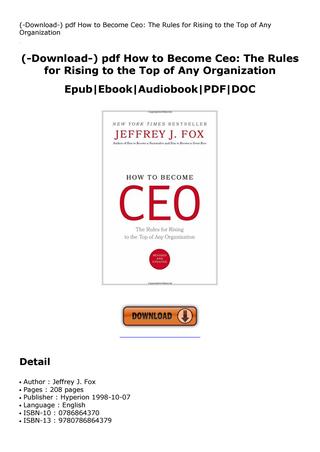
In some cases, a lessor may put up some funds combined with borrowed funds from a third party which can help to improve the overall terms of the lease. When
the lessee evaluates the cost of the lease by measuring the present worth
of the rents, the lessor may obtain a better bid by using a «low-high»
rent structure. That is, rents are lower in the beginning of the lease
term and higher at the end. Such a rent structure may show a present value
cost lower than level rents for a given return to the lessor. However,
the uneven-rent test constrains the amount by which the rents can vary.
Our example lease includes an early buyout option («EBO») which permits
the lessee to purchase the leased equipment on January 1, 2008 for $627,867. In our example lease, the lessor�s yield if the EBO is exercised is the
same as the full-term yield, namely 7% after tax, but the deal could have
been structured for a different EBO yield. The EBO is similar to a termination
value in that it generally protects the lessor�s yield as well as repays
the lenders. Our EBO is a «deferred EBO», which means that the EBO is paid
in five installments, one on January 1, 2008 and four more which match
the lessor�s tax liability in 2008. The deferred EBO is used because it
results in a lower present worth of the EBO to the lessee. It does not
lower the lessor�s yield because the lessor will be in a sinking fund state,
and the sinking fund rate is zero.
3 Changes to a leveraged lease arrangement
Having a software to maintain compliance and keep up with day two lease accounting can help your team be more efficient and have a smoother close process. Finding software that assures controls and calculations can provide additional trust in the accuracy of your financials. An accounting software vendor needs to provide this assurance through SOC reports. Topic 842 offers elections meant to ease the transition process, referred to as practical expedients.

The lessor pays the lending institution back by way of the lease payments received from the lessee. Under the loan agreement, the lender has rights leveraged lease meaning to the asset and the lease payments if the lessor defaults. No member of the lessee group may pay for part of the cost of the equipment.
ASC 842 software: What are the benefits beyond compliance?
The effect is substantially to remove the credit of the lessor from
the transaction. The lessor will not record the loan as a liability nor
the equipment as an asset for financial reporting purposes. However, the
lessor will report the cash investment as an asset and the deferred taxes
as a liability. Per the guidance, existing capital leases will not require adjustment or remeasurement upon transition, provided they were accounted for correctly under ASC 840.
For that reason, both parties usually account for leveraged leases as operating leases. In evaluating the economics of a leveraged leasing transaction, the
lessee should not combine the analysis of how to finance the equipment
with the analysis of whether to acquire the equipment. Whether to lease
or to own equipment which the prospective lessee has already decided to
acquire is basically a financial decision.
ASC 842 vs. IFRS 16: What are the differences between the two?
Do not think that the yield is «really» higher
just because the analysis method has changed. Alternatively, calculate
the required return on capital given the hurdle return on equity and the
known debt cost and leverage. The only real tax benefit available to purchasers of new equipment under
the 1986 Act is an accelerated depreciation deduction. This confers a benefit
provided that the lease term for the equipment is longer than its depreciable
life, because substantial taxes would then be deferred. For our lease,
the deduction available the first year is $142,857 and the deduction available
the second year is $244,898. These depreciation deductions are of value to
the lessor only if it has income from other sources in excess of these
deductions and if the lessor is not subject to the Alternative Minimum
Tax.
Downtown real estate and commercial buildings are struggling. Why … – Slate
Downtown real estate and commercial buildings are struggling. Why ….
Posted: Fri, 26 May 2023 07:00:00 GMT [source]
Others believe that the
10% test in the guidelines provides a safe harbor from Section 467 problems. The lessor must demonstrate that it expects to receive a profit on the
lease apart from tax benefits. This requirement is satisfied if the sum
of the rent and expected residual is greater than the sum of the debt service
and investment. This requirement is met if the total rent exceeds the total
debt service by a reasonable amount. This reasonable amount has been interpreted
to be 2% of the investment multiplied by the number of years in the lease
term. The first point made in the guidelines is that the lessor must have
a minimum unconditional at-risk investment of at least 20% of the cost
of the leased equipment at the beginning of the lease term.
Operating lease accounting under ASC 842 and examples
Therefore, the lessor would
reject the internal rate of return yield as too high. Another objection
to the normal internal rate of return analysis as applied to leveraged
leases is that it may give rise to more than one yield. However, this objection
should be viewed as the mathematics trying to tell the analyst that something
is wrong rather than as a basic fault with the method. However, there is a second form of the return on equity calculation
which has more general applicability.
- The return on equity measures became more popular during the early 1980’s
when many industrial companies were entering the leveraged lease marketplace. - This content is for general information purposes only, and should not be used as a substitute for consultation with professional advisors.
- No member of the lessee group may lend to the lessor any of
the funds necessary to acquire the equipment or guarantee any indebtedness
created in connection with the acquisition of the equipment by the lessor. - That is, rents are lower in the beginning of the lease
term and higher at the end. - The return on
equity rate is a yield rate on equity, and for highly leveraged companies
it will be several times the MISF yield rate. - The EBO is similar to a termination
value in that it generally protects the lessor�s yield as well as repays
the lenders.
Having decided to acquire equipment,
there are two common ways to evaluate the cost of financing, the «present-worth»
method and the «basic-interest-rate» method. Neither has the relevance
and market acceptance of the methods used to evaluate lessor economics. This last point is especially important for a lessee whose main problem
is the availability of sufficient capital for its needs. The lessee may
be able to obtain more funds through debt and equity sales in addition
to leveraged leasing than it could through debt and equity sales alone.
Single
investor leases are always pure investments plus a residual value. For
many leases, one of these elements dominates the investment decision, and
economic analysis is relatively simple. It is not possible to compare different elements of a
lease on a consistent basis unless a way is found to assign standard values
to each element. This is just another example that «you can’t add apples
and oranges.» Lessors evaluate the different elements by «feel» and reach
an investment decision. Other yield methods based on accounting considerations are coming into
more common use. Therefore, banks are concerned about the effect of a large number of leveraged
leases on this ratio.
DocuSign Announces First Quarter Fiscal 2024 Financial Results – PR Newswire
DocuSign Announces First Quarter Fiscal 2024 Financial Results.
Posted: Thu, 08 Jun 2023 07:00:00 GMT [source]